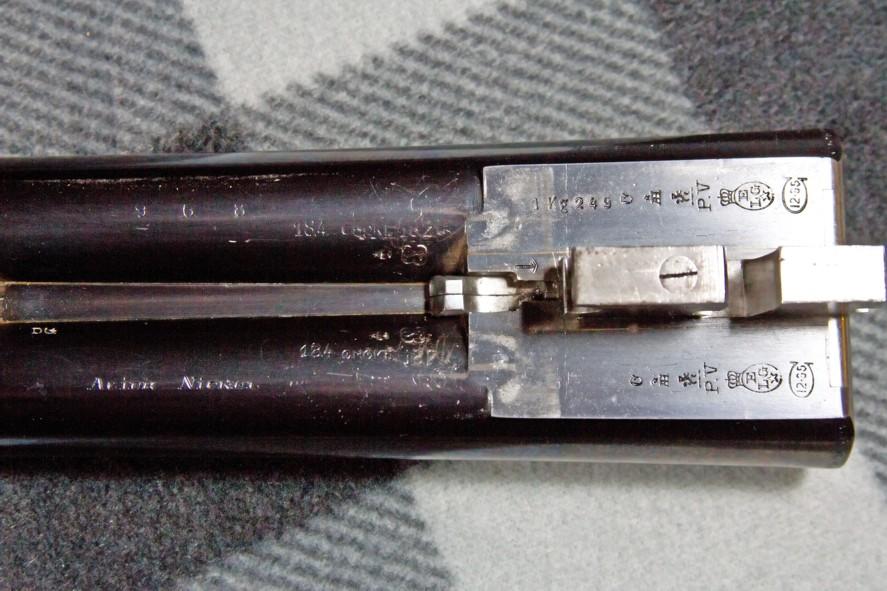Some of the most beautiful work of this craftsman, and many others, are in this book “Liège Gunmakers through their Work. 1800 - 1950”.
For more detail see: LIEGE GUNMAKERS
MONISSE Joseph Charles
Here is
one and even two classic shotguns juxtaposed Anson & Deeley system from the
Liège armourer
Joseph MONISSE
sold by the Parisian armourer Hubert Antoine. Floral engravings, English butt.
As the
very happy owner of this beautiful rifle sent us a little later a second request
for identification of an identical rifle, from the same Liège manufacturer sold
by the same Parisian armourer bearing the same number 925, but with a 2 on the
stripe between the two guns and a 2 (different. . . ) on the opening key, we
assume (quite logically) that he would be able to identify the same rifle. It’s
a pair.....unless the lucky owner wanted to check if the I. D. team was
awake.....
The
markings
Poldi Anticorro Steel Kladno JF: registered by gunman
Jean FALLA;
Kladno is a city of the former -Czechoslovakia (Bohemia) known for its steel
industry, unfortunately abandoned;
m: annual
letter for 1934 ;
EL:
provisional proof, in use since 1852;
Lion on
PV: smokeless powder proof, in use since 1898;
q under
star: countermark of a controller, in use since 1877;
ELG on
star in crowned oval: acceptance, in use since 1893;
12 -70 in
coated omega: nominal caliber and length of the casing, in use since 1924;
1KG397:
barrel weight, in use since 1924;
18. 5
CHOKE 18. 3: choked barrel, in use since 1924;
Peron:
inspection, in use since 1853;
Joseph
Charles MONISSE,
Rue Renardi in Liège, was registered in the proofhouse of Liège from 1922 to
1951. He continued his trade as a craftsman. He was using the
J. M.
brand.
Hubert
Antoine, 31 avenue de Suffren in Paris, was known for his luxury hunting weapons
in pairs. He also sold luxury foreign weapons, including Holland and Holland.
According to one source, it was active in the 1900s. -1950, according to another
between 1931 and 1978. So there’s a mistake somewhere, but anyway, these guns
are from 1934.
GP with
the help of HPH, PHL, and the team.
Here's the first rifle
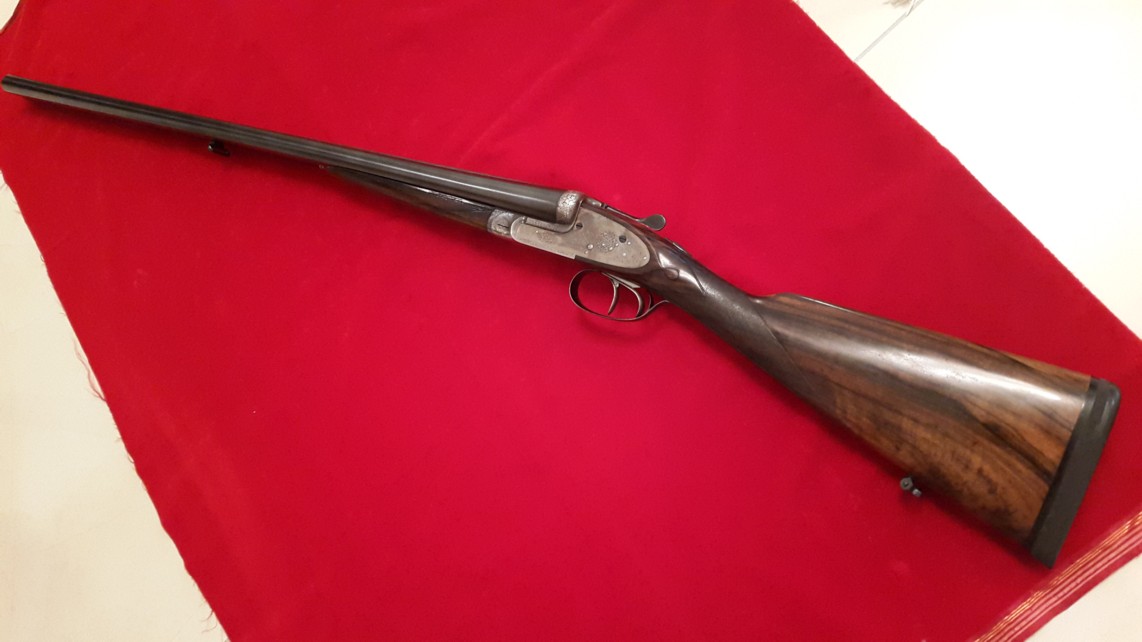


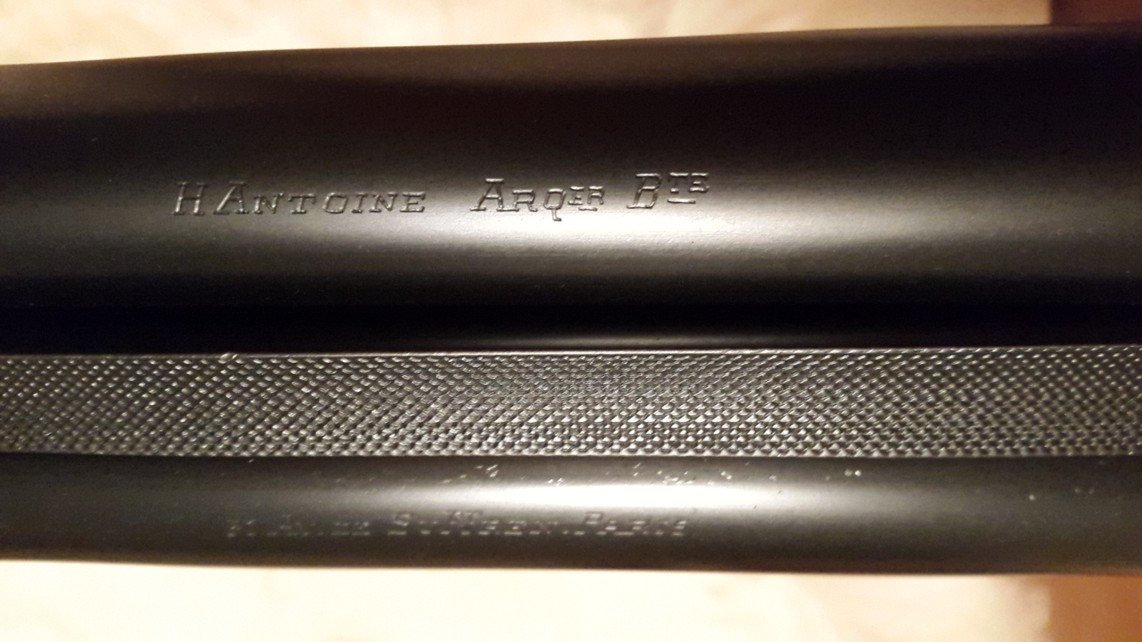
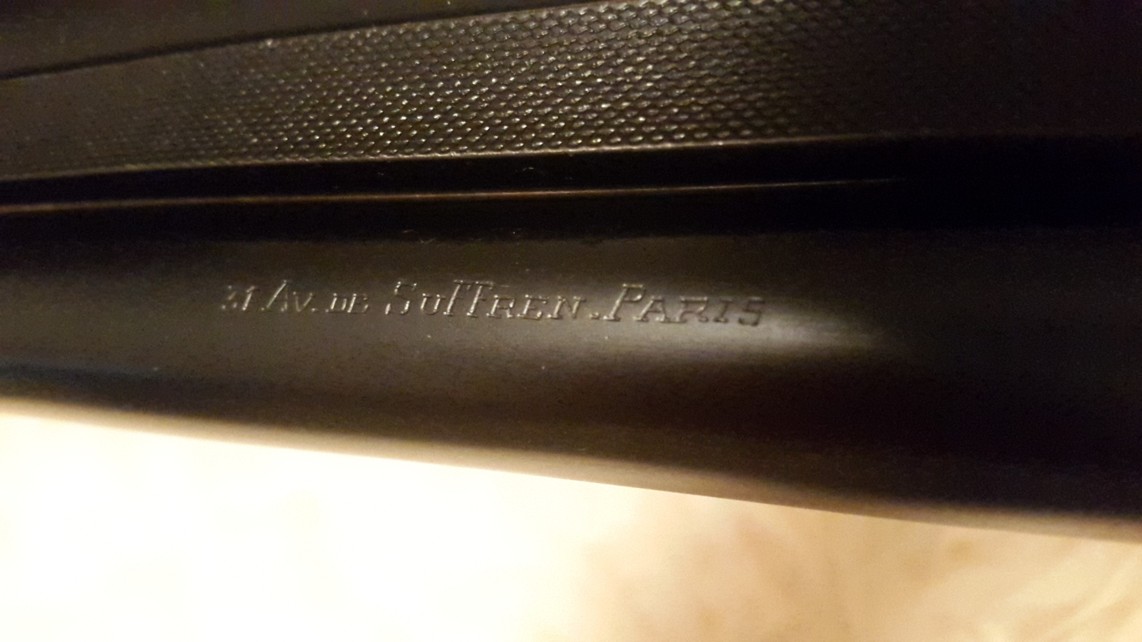
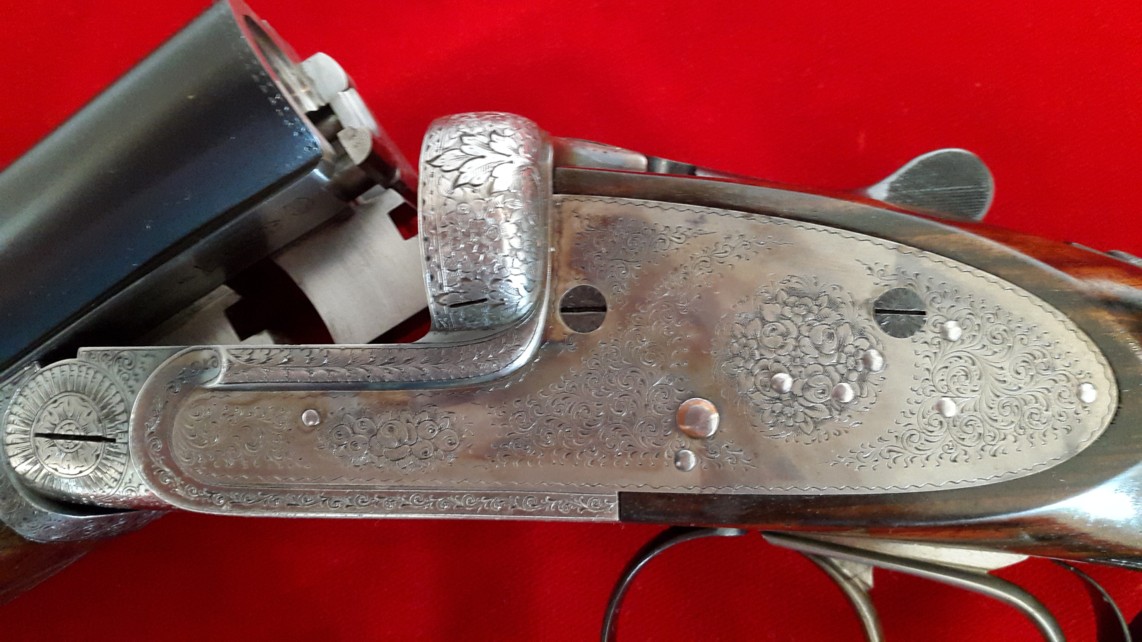
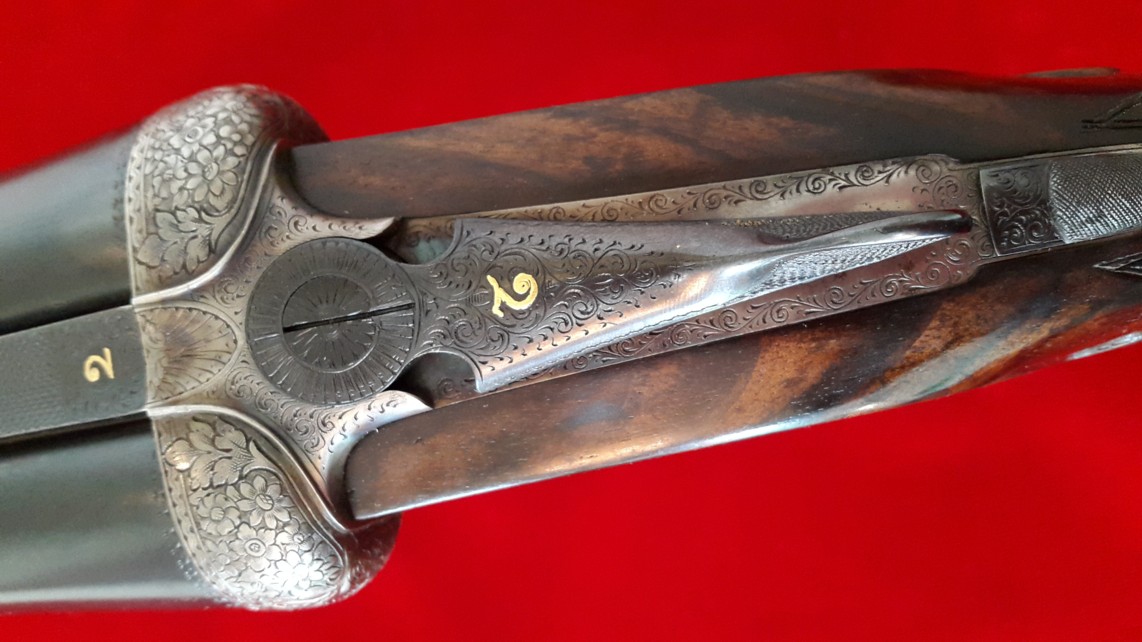

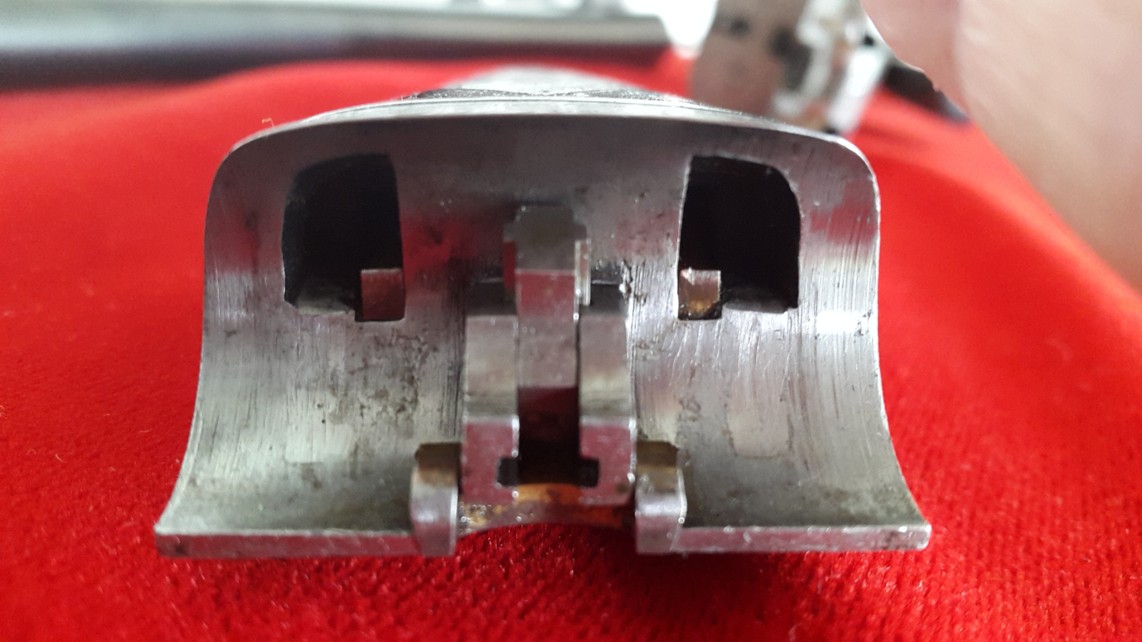
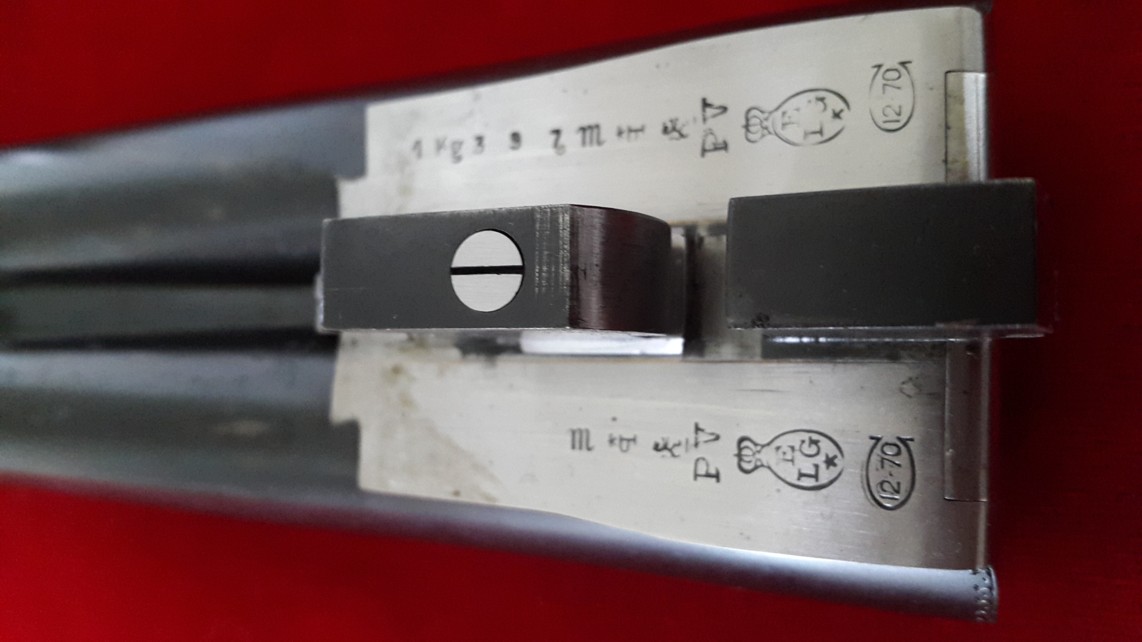
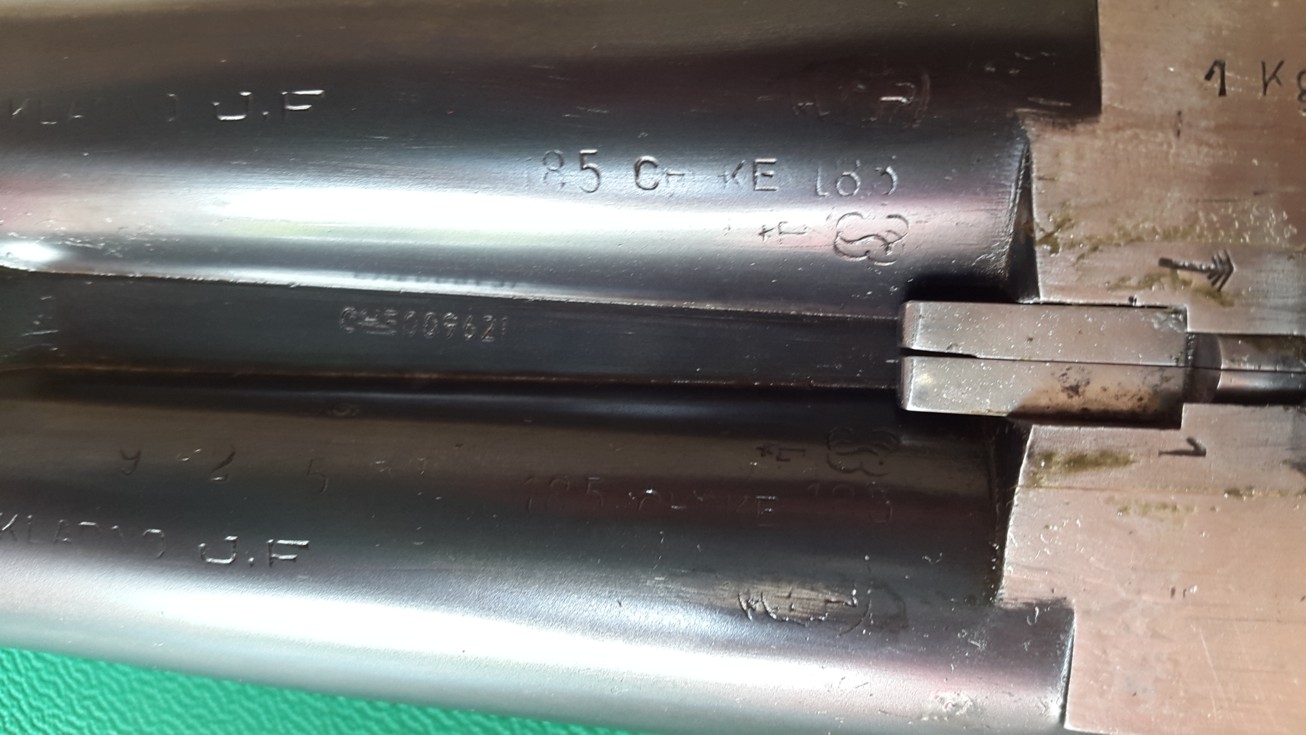
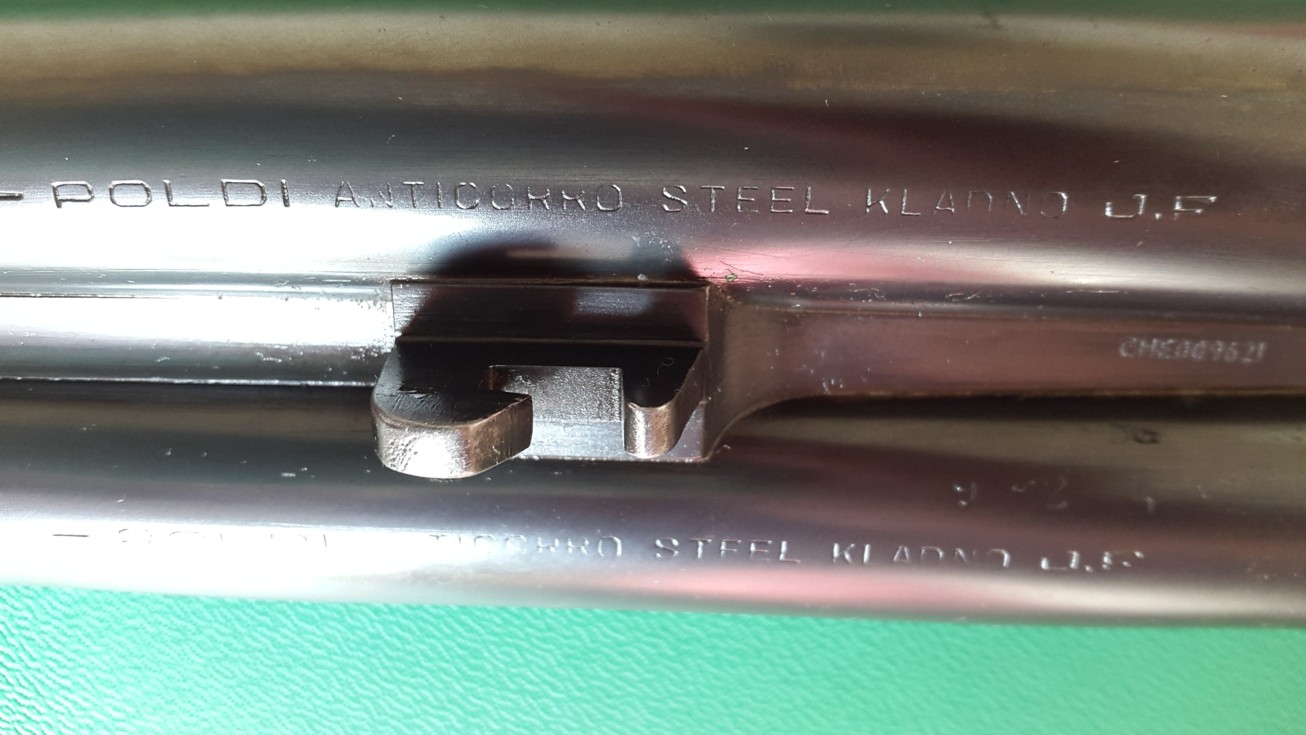
And here's the second

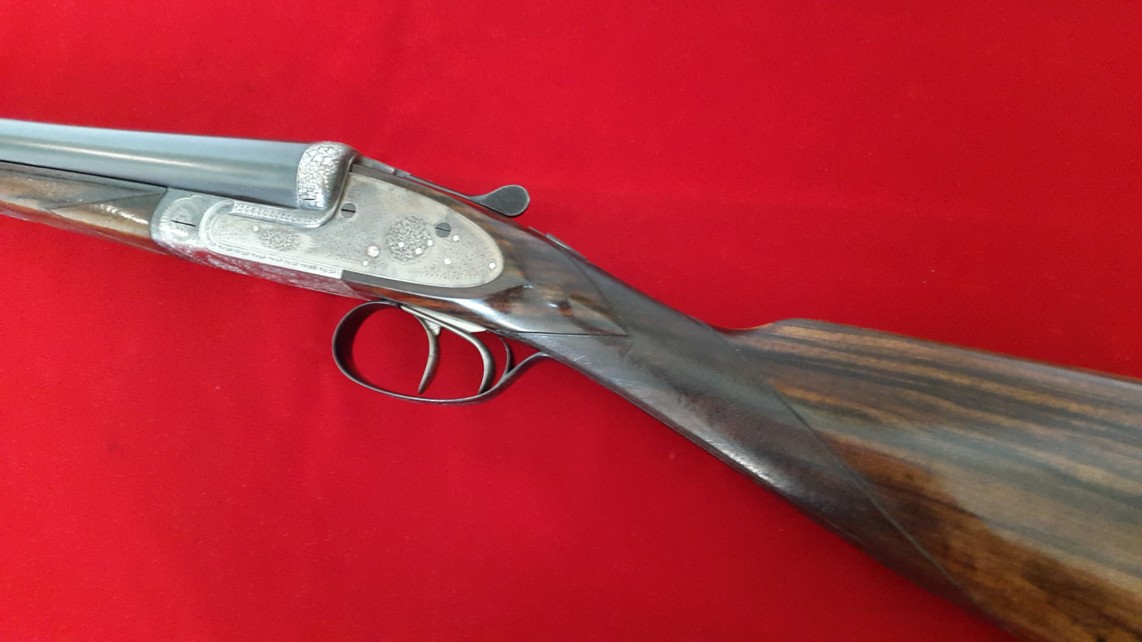
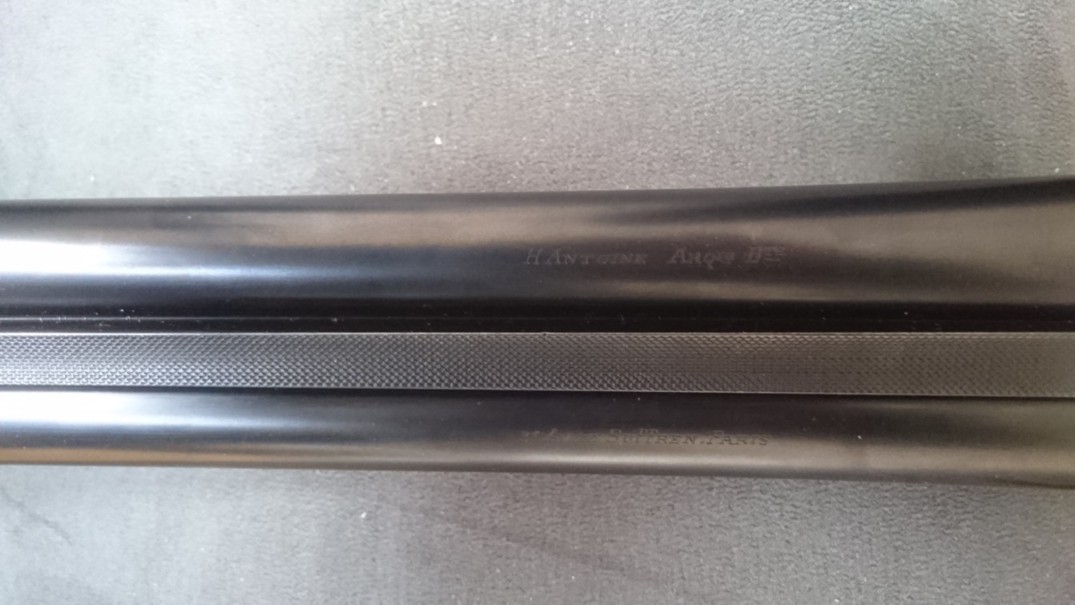

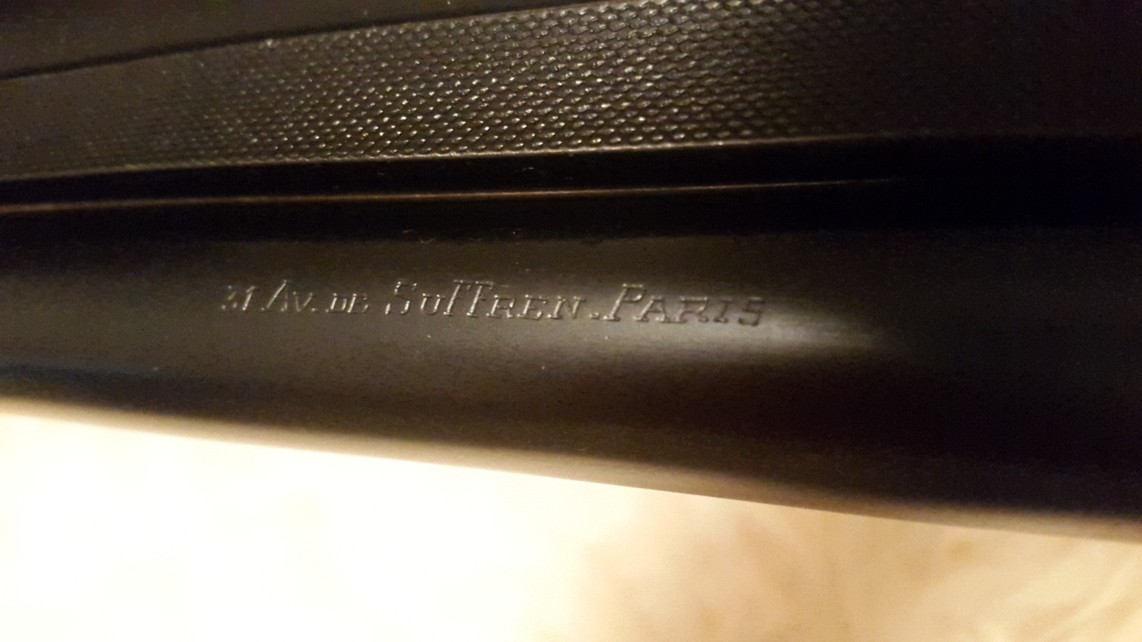
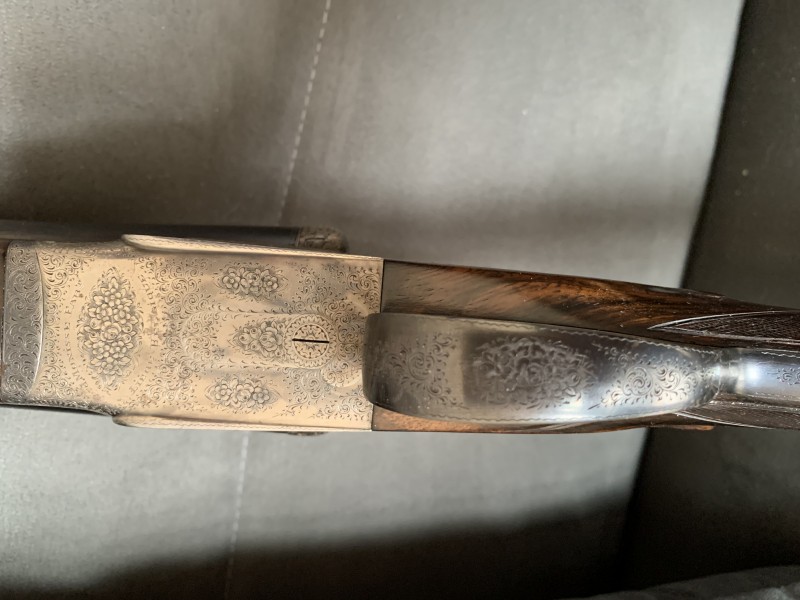
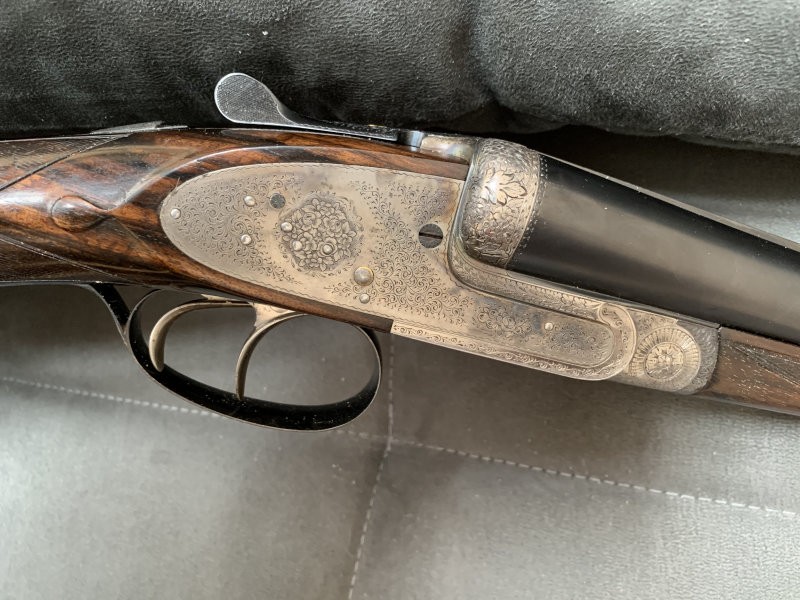
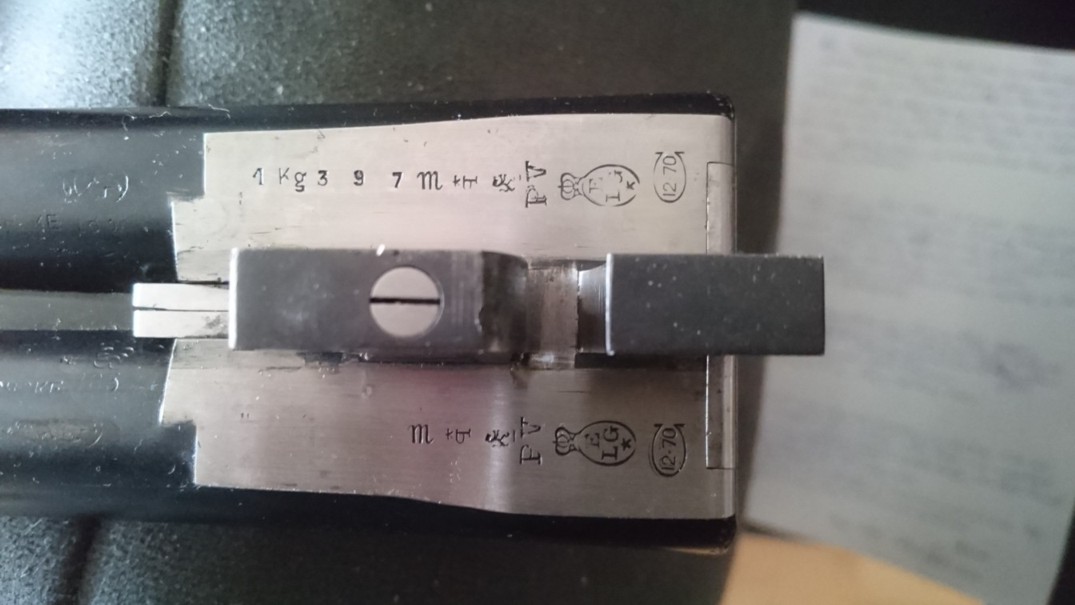
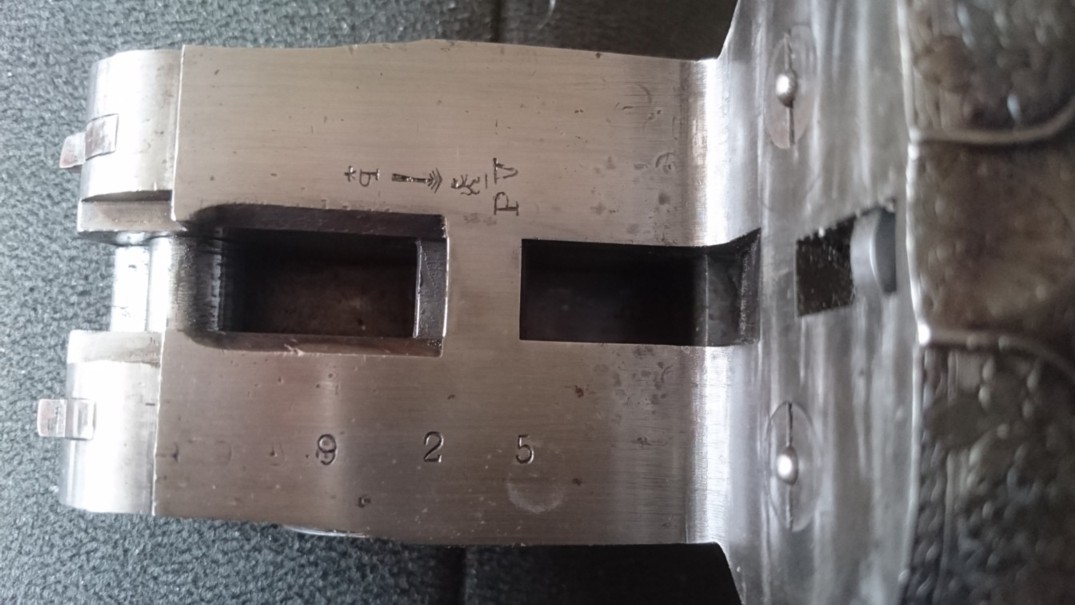
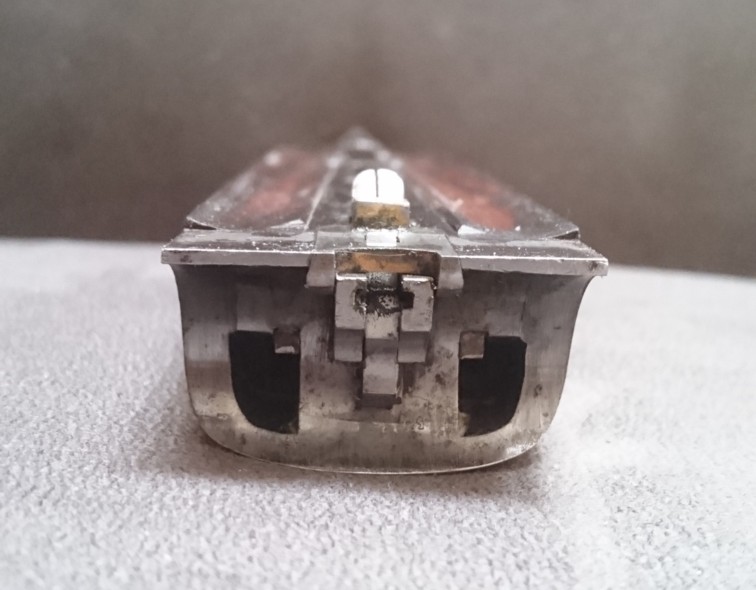
Monisse Joseph Charles
Shotgun hammerless to juxtaposed barrels and central percussion. Locks are of type “ahead”. The system of opening is with key “Top Lever”. Safety is with slide of the Galand type. The forearm is with push rod. The oval trigger guard protects the two curved triggers. The stick in walnut is worked “with English”. Engraving is known as “in rollers”.
The weapon carries the lawful punches of the proofhouse of Liege, that is to say:
ELG* in a crowned oval: final acceptance post 1893.
AH* and T*: countermarks of the controllers, of use of 1877 to 1968.
PV surmounted of a stylized lion: test with the powder without smoke, of use of 1898 to 1968.
Peron: inspection, of use of 1853 to our days.
12-65 in the letter omega: gauge nominal and length of the casing, of use of 1924 to our days.
Letter “o”: yearly letter of 1936.
18.4 Choke 18.2: chokes barrels: gauged to 22 cm of the breech. In use of 1924 to 1968.
1Kg249: weight of the barrel which can draw from the powders without smoke (weapons smooth) except for the gram. In use of 1924 to our days.
EL in English letters: provisional test, of use of 1852 to our days.
The weapon also carries the following marks:
968: number of the weapon.
ACIER NICKEL (NICKEL-PLATED STEEL): type of steel used for the barrels.
RM engraved on the trigger guard: Probably initials of the 1st owner.
J. CH.
MONISSE in LIEGE:
mark of the manufacturer
Joseph Charles Monisse
street Renardi in Liège. Registered voter with the proofhouse of 1922 to 1951.
L. Smeets : engraver of Liège represented on our website : Smeets
GG










